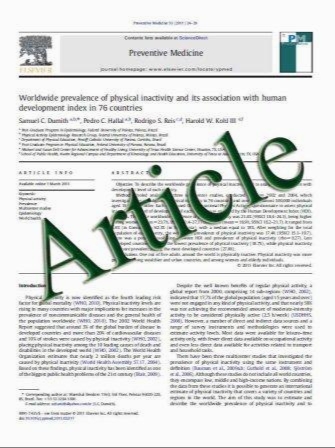A population-based case-control study of risk factors for neural tube defects in Shenyang, China
- نوع فایل : کتاب
- زبان : انگلیسی
- مؤلف : Zhihua Yin & Wei Xu & Changying Xu & Shiqi Zhang & Yajun Zheng &Wei Wang & Baosen Zhou
- چاپ و سال / کشور: 2010
Description
(NTD) in Shenyang, we carried out a population-based casecontrol study. Methods We used chi-square test or Fisherپfs exact test to evaluate variations in the prevalence by selected covariates. Adjusted odds ratios and 95% confidence intervals were derived from univariate and multivariable conditional logistic models. Results A history of maternal previous birth defect-affected pregnancy was a risk factor for NTDs (adjusted OR=4.00, 95%CI=1.29.12.45). Risks for NTDs were significantly associated with exposure to maternal factors during the periconceptional period such as a history of fever or cold (adjusted OR=6.36, 95%CI=3.24.12.52), use of analgesic and antipyretic drugs (adjusted OR=4.94, 95%CI=1.79. 13.63), oral contraceptive use (adjusted OR 2.06, 95%CI 1.16, 3.68), and passive smoking (adjusted OR=2.24, 95%CI= 1.04.4.81). Folic acid tablets use and fresh vegetable or fruit consumption .6meals a week in periconception appeared to be protective factors (adjusted OR 0.33, 0.55, and 0.40, and 95% CI 0.13.0.44, 0.30.1.01, and 0.21.0.74, respectively). Differences in risk were found between the two most common phenotypes of NTD, anencephaly, and spina bifida. Conclusions This study suggests that a history of previous birth defect-affected pregnancy, a history of maternal fever or cold, use of analgesics, antipyretics, and oral contraceptives, exposure to passive smoking, folic acid use, and consumption of fresh vegetable and fruit may be associated with NTD risk.
Childs Nerv Syst (2011) 27:149–154 DOI 10.1007/s00381-010-1198-7 Received: 12 November 2009 / Accepted: 10 June 2010 / Published online: 26 June 2010


